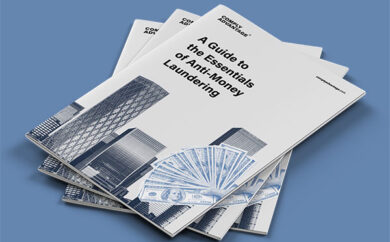

The non-fungible token (NFTs) sector is in a state of flux. Reuters estimates that sales of NFTs reached around $25bn in 2021, and individual items have sold for as much as $90m. But high-profile scams in 2022, such as a $600m hack of NFT gaming company Axie Infinity in March, and $2.8m worth of NFTs stolen from the Bored Ape Yacht Club’s Instagram account in April, have prompted uncertainty in the market.
What are NFTs?
NFTs are digital representations of real-world objects bought by collectors and usually sold online. They are supported by blockchain technology – often the Ethereum blockchain – and contain built-in authentication, which is proof of ownership.
NFTs have existed since 2014 but are increasingly likely to come to firms’ attention through client transactions. Like physical artwork or collectibles, NFTs are unique or have a limited run, which means the amount NFTs are worth is subjective.
What is NFT Money Laundering?
The regulation of NFTs is still in its infancy, as regulators and international bodies explore how they are used and how widespread adoption has become.
With increasing amounts of money – often cryptocurrency – being used to pay for NFTs, there are concerns that they may be used to circumvent expanding anti-money laundering (AML) rules for traditional art.
For example, under the EU’s Fifth AML Directive, anyone involved in purchasing or selling a work of art for more than €10,000 has AML obligations to carry out Customer Due Diligence (CDD) and report any suspicious activity.
As the Directive doesn’t define what a ‘work of art’ is, or mention NFTs, it is unclear whether NFTs could be considered works of art and be subject to AML/CFT and Know Your Customer (KYC) practices under this ruling.
However, in 2020, the EU proposed a regulation that may apply to NFTs. The Markets in Crypto-assets Regulation (MiCA) defines NFTs as “a digital representation of value and rights which may be transferred electronically, using distributed ledger technology or similar technology”.
NFTs may fall under the ‘other crypto-assets’ category of the regulation – meaning issuers do not have specific licensing obligations, but are required to be a legal entity (even when being established outside the EU) and comply with specific business and governance conduct requirements.
In the US, while there is no direct regulatory guidance on NFTs, some states have created laws that could hold NFTs under their purview.
How does Money Laundering Through NFTs Work?
While the ways that criminals can launder money are diverse, the basic principles of money laundering – placement, layering, and integration – apply to NFT money laundering.
As Financial Action Task Force (FATF) guidance states, much of the risk and regulation relating to NFTs and money laundering will depend on how they are being used and the nature of the asset that is traded.
In 2022, the US Treasury warned of the risk of NFT money laundering in the art sector. “The ability to transfer some NFTs via the internet without concern for geographic distance and across borders nearly instantaneously makes digital art susceptible to exploitation by those seeking to launder illicit proceeds of crime because the movement of value can be accomplished without incurring potential financial, regulatory, or investigative costs of physical shipmen,“ the report said.
The Treasury Department also flagged that criminals could self-launder money by purchasing an NFT, then passing it to themselves through different digital accounts, creating a sales record before selling to an unsuspecting buyer, and coming out clean on the other end.

Comply With Cryptocurrency AML Regulations
Learn how your business can identify crypto AML red flags with our fast and flexible AML compliance solutions.
Explore our AI Driven SolutionsWhy are NFTs Attractive for Money Laundering?
While there is no evidence that money launderers are flocking to NFTs, facets of the trade of NFTs will seem appealing to potential criminals.
For example, a simple way to detect potential trade-based money laundering is whether the price of a transaction is in line with the fair market value of an item. But with the volatility of the NFT market, discerning a reasonable price for an item can be tricky – making it much easier for potential NFT money laundering.
And although NFT transactions have unique codes that are recorded on a public ledger, purchasers can remain anonymous, a big plus for anyone looking to wash assets discreetly.
There is also no mechanism to prevent launderers from creating multiple accounts and transferring assets to cover their trails further.
Some industry commentators believe the NFT money laundering risks are high, arguing that NFTs could be used to facilitate ML and tax evasion for the wealthy, as they face less scrutiny from regulators and lawmakers.
NFT money laundering scenarios could involve phishing and virus attacks, identity fraud, or forgeries.
What is NFT Wash Trading?
Wash trading – a transaction in which the seller is on both sides of the trade to paint a misleading picture of an item’s value and liquidity – is an ongoing concern with cryptocurrency exchanges, some of which have attempted to inflate trading volumes.
For NFTs, wash trading takes advantage of the fact that many trading platforms allow users to trade by simply connecting their wallets to the platform, without needing to identify themselves.
US comedian and crypto investor Isaiah McCall, who created a 2021 blog titled ‘How to Launder Money with NFTs,’ warned that you could spend $1m of illegal money on your own NFT, resell it for nothing, and bank the profits.
A 2022 report by Chainalysis reveals that some sellers have conducted hundreds of NFT wash trades. The report shows that while most NFT wash traders were unprofitable, the top 110 profitable wash traders made a collective $8.9m in profit. Many purchases at NFT marketplaces were also shown to come from illicit addresses, used stolen funds, or came from addresses with sanctions risk.
NFT Money Laundering Risks
What are the risks?
The risks around NFT money laundering are still emerging. The FATF is beginning to sketch out its approach to NFTs distinct from decentralized finance (DeFi), and this will likely shape how many major financial markets approach the issue.
Among the measures recommended to counter the risk of NFT money laundering are greater private sector information sharing to improve transparency in the art sector, and applying AML/CFT requirements, such as completing suspicious activity reports and KYC processes, to art market participants.
The Royal United Services Institute (RUSI), a security think tank, has highlighted that NFTs are most often purchased with cryptocurrency on online marketplaces – meaning that the AML risks associated with crypto should also apply to NFTs. RUSI also warns of the risk of an NFT ‘art heist’ – where a criminal actor could hack user accounts on NFT marketplaces and transfer NFTs to their accounts.
Can NFT Money Laundering Risks be Mitigated? If so, How?
Firms that haven’t done so should integrate NFT management into their risk assessments and risk-based approach to AML. RUSI guidance on how NFT money laundering risks can be mitigated sets out a regulatory foundation firms can start to build out/plan.
Ways to mitigate NFT money laundering include:
- Setting a baseline for companies that want to focus on NFTs
- Implementing KYC policies and ongoing monitoring, similar to those used in the traditional art market and compliant cryptocurrency exchanges
- Ensuring there is an option for two-factor authentication for consumers
- Confirming cyber security measures are in place to protect against hackers
- Possible development of a register of stolen or fraudulently purchased NFTs, mimicking the global Art Loss Register
To learn more about money laundering risks – download our AML Guide for Crypto Firms.
Originally published 26 July 2022, updated 26 July 2022
Disclaimer: This is for general information only. The information presented does not constitute legal advice. ComplyAdvantage accepts no responsibility for any information contained herein and disclaims and excludes any liability in respect of the contents or for action taken based on this information.
Copyright © 2025 IVXS UK Limited (trading as ComplyAdvantage).
